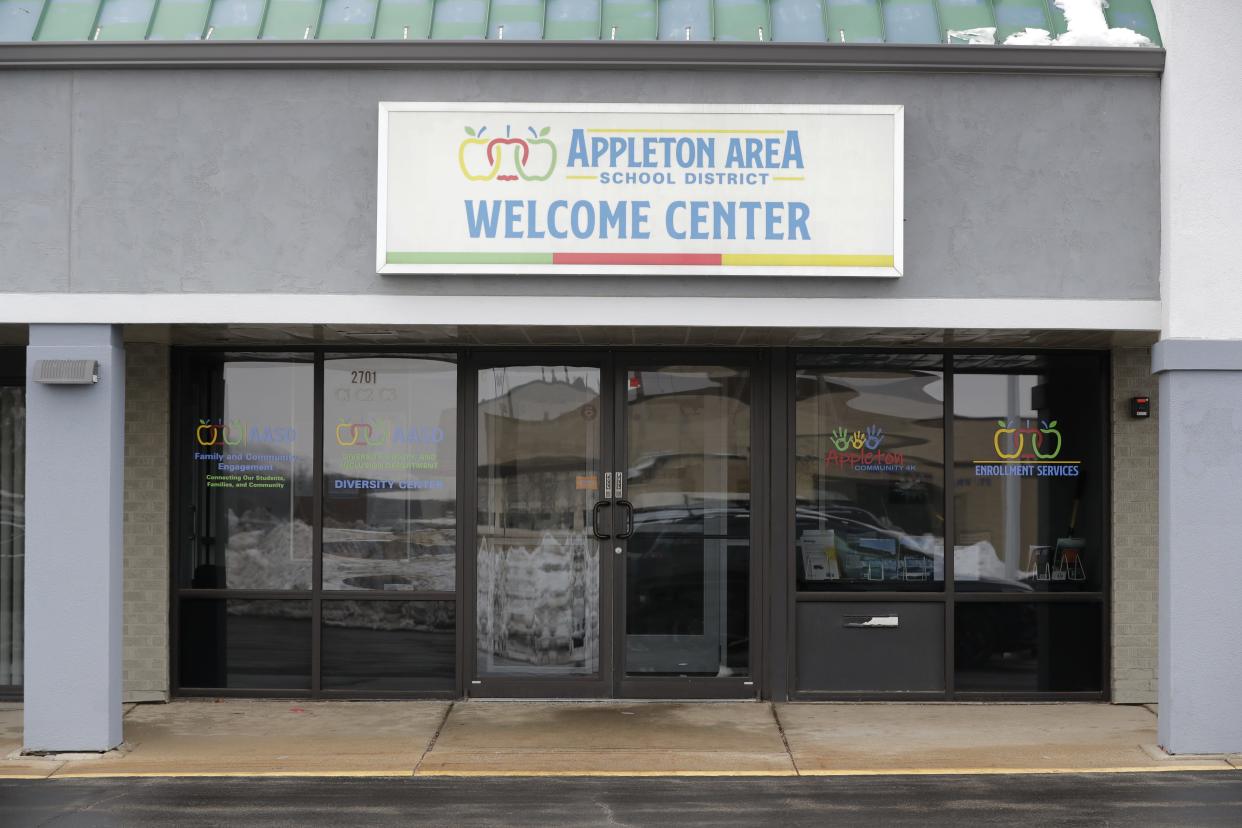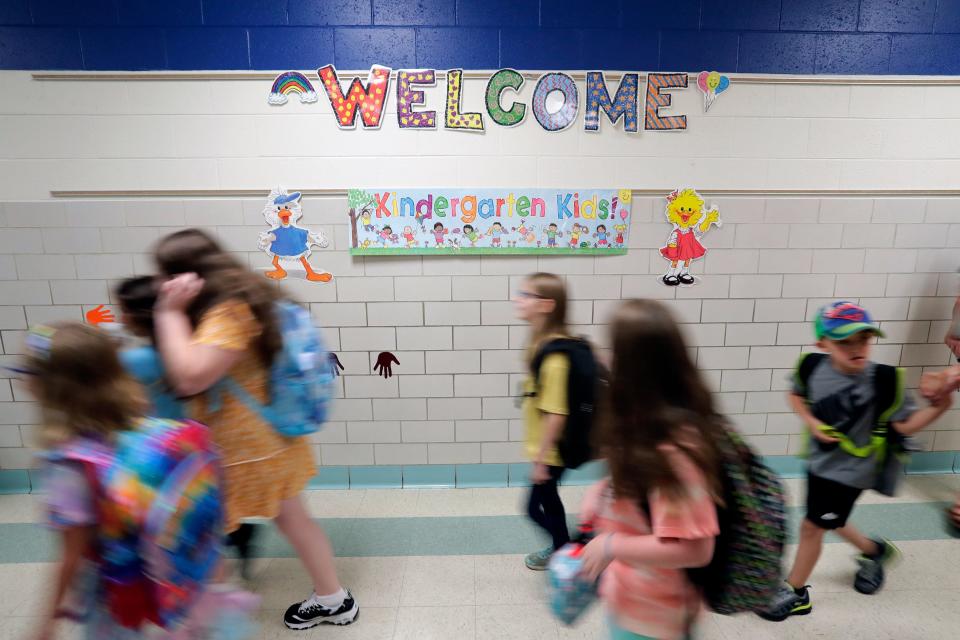10 common Wisconsin open enrollment questions answered

With Wisconsin’s open enrollment period beginning Feb. 5, many Wisconsin families are considering which school is right for their children.
If families want to stay within the public school system, one option is open enrollment, which allows students to go to a school district other than the one they live in.
In the last school year, 73,280 students participated in open enrollment, or about 9% of all Wisconsin public school students. Any Wisconsin student in four-year-old kindergarten to grade 12 may be eligible for open enrollment. Families can apply between Feb. 5 and 4 p.m. April 30.
Here are answers to frequently asked questions about the Wisconsin open enrollment program.
What’s the difference between a resident district and a nonresident district?
When talking about open enrollment, a “resident district” is the school district assigned to a student’s home address. The “nonresident district” is one that a student applies to attend via the open enrollment procedure.
How do I apply to open enroll my child?
The Wisconsin Department of Public Instruction (DPI) describes the regular application period, which begins Feb, 5, as “a parent’s first and best opportunity to apply for open enrollment for a particular school year.”
Families will need to apply using DPI’s application form, which will be on the main page of the open enrollment website, dpi.wi.gov/open-enrollment, when the application period begins. DPI recommends submitting applications online, but if a parent or guardian can’t use that method, they can submit a paper application directly to the districts they’re applying to.
A student can apply to up to three nonresident school districts and an unlimited number of virtual charter schools. Applicants can request a specific school or program, including charter schools, but there’s no guarantee that they will get into their preferred choice. This decision is made by each district.
Once accepted into their district of choice, families don’t need to reapply every year, but may need to reapply when a student is transitioning to middle or high school.

What if I want to change districts during the school year?
Those needing to apply for open enrollment outside of the regular application period can submit an alternative application. These applications are open throughout the school year.
There are a few circumstances under which a family can submit the alternative application:
The student is a victim of a violent crime, as acknowledged by their resident school district
The student has been homeless in the current or prior school year
The student is a victim of repeated bullying or harassment
The student moved to Wisconsin within the past 30 days
The student moved as the result of a parent or guardian’s military orders
The student’s place of residence changed as a result of a court order, custody agreement or foster home placement
It’s in the student’s best interest to attend the nonresident school district, as determined by both the resident and nonresident school district and the student’s parent
What happens next in the regular application process?
Both the resident school district and nonresident school district must approve the request to open enroll.
Those applying during the regular process for the 2024-25 school year will be notified through email or mail by June 7 of their acceptance or denial by the nonresident school district. If the student is accepted, the notification must also include the specific school or program the student is assigned to. The resident school districts must notify the family if their application is denied by June 14.
If the request is approved by both districts, families must notify the nonresident district if their student will attend that district by June 28. If they don’t meet this deadline, the nonresident district may deny enrollment.
What happens next in the alternative application process?
Just like with the regular application process, both the resident and nonresident school districts must approve the request to open-enroll via the alternative application process.
In the case of an alternative application, the nonresident school district must notify the parent in writing whether their application was approved or denied within 20 days after receiving the application. If accepted, the pupil can immediately attend school in the nonresident district, but they must start attending within 15 days or another time period dictated by the nonresident district.
What are reasons for denial of open enrollment?
During the regular application process, the resident school district can prevent students from enrolling in the nonresident school district if their open enrollment application is early, late or missing information, or if the student does not meet age requirements. The nonresident school district may also deny an open enrollment request for the following reasons:
Regular or special education space, or the specific services a student requires, is not available
The pupil was referred but not evaluated for special education
The pupil was expelled for specific violent conduct in the past three years (in the case of the regular application process) or during the current or two previous school years (in the case of the alternative process)
The student has been habitually truant in the past school year. In the case of the alternative process, they can be denied if they were habitually truant in the present school year or the previous school year.
In the alternative process, resident districts can deny an application if they find the pupil doesn’t meet the criteria for the application or they disagree that open enrollment is in the best interests of the pupil. A resident district can’t deny an alternative application based on the district’s finding that the pupil was the victim of a violent crime.
The nonresident school district may deny an alternative application for the same reasons they can deny a regular application, or they don’t believe the transfer is in the best interest of the student.
What happens if I try to open enroll and my request is denied?
In the regular application process, families have 30 days to file an appeal to DPI if their request was denied. If denied by both the resident and nonresident school district, families have to fill out two separate appeal forms. DPI handles the appeals, but in general will not accept an appeal unless they find the decision was “arbitrary or unreasonable.”
In the alternative application process, families can appeal the resident school district’s denial to DPI within 30 days of receiving the notice of denial. Depending on the situation, the DPI’s decision may be final or appealed to circuit court. If the alternative application is denied by the nonresident school district, families cannot file an appeal.
Once a student is open enrolled, can a school send the student back to their resident district?
Nonresident school districts can end open enrollment for a student if the district doesn’t have the resources for a student’s Individualized Education Program, the student is expelled from a school, or the student is habitually truant, which is defined as having unexcused absences for five days or more per semester.
More: Tips for Wisconsin students to establish regular attendance in the new school year
Why do people open enroll?
There are many reasons why families may choose to open enroll into a nonresident school district.
For example, the Appleton Area School District, which saw a net gain of nearly a thousand students through open enrollment, attracts parents because of “the quality of our staff and … the many educational options that we provide students,” said superintendent Greg Hartjes.
And, when the Little Chute Area School District last surveyed their open-enrolled families, they found that families chose the district because of location, smaller class sizes and student-teacher ratios. “While our first priority is to serve our community, we’re able to provide competitive opportunities with that small-community feel," said superintendent Heidi Schmidt.
In response to questions on three area parenting Facebook pages, parents said they chose a nonresident school district or specific school to better suit their child’s learning needs, often choosing a particular charter school or special education program. Parents also open enrolled due to home and child care locations, school ratings and keeping their kids in their original school district after a move.
Are there added fees to open enrollment?
There is no cost to submit an open enrollment application and there is no tuition cost for participating in open enrollment. However, families of open enrolled children may be charged the same fees as resident families.
In general, caregivers are responsible for transporting their open enrolled children to and from school, unless an Individualized Education Program says otherwise. If families are eligible for free or reduced lunch, they can apply to have some of their transportation costs reimbursed.
Can I open enroll in 4-K?
Wisconsin families looking to open enroll their child in four-year-old kindergarten can only do so if the resident school district offers 4-K.
Wisconsin statute requires all school districts to offer five-year-old kindergarten, but school districts can choose to offer 4-K, DPI’s website states. However, most school districts do offer 4-K programming.
To be eligible for 4-K, a child must be 4 years old on or before Sept. 1 of the year the child will start school.
Families are not required to enroll their child in 4-K in Wisconsin. Technically, five-year-old kindergarten is not required either, as children are not legally required to begin attending school until age 6.
But, when it comes time for first grade, students must have completed 5-K or receive an exemption, DPI’s website states. According to state statute, each local school board is required to establish policy for such exemptions. Exception policies may vary from school district to school district.
More: Republican lawmakers hope to change 4K in Wisconsin to bolster child care. Here's what to know.
Madison Lammert covers child care and early education across Wisconsin as a Report for America corps member based at The Appleton Post-Crescent. To contact her, email mlammert@gannett.com or call 920-993-7108. Please consider supporting journalism that informs our democracy with a tax-deductible gift to Report for America.
Rebecca Loroff is an education reporter for the USA TODAY NETWORK-Wisconsin. Contact her with story tips and feedback at 920-907-7801 or rloroff@gannett.com. Follow her on X (formerly Twitter) at @RebeccaLoroff.
This article originally appeared on Appleton Post-Crescent: Wisconsin's open enrollment for schools starts Feb. 5. Here's what you need to know

